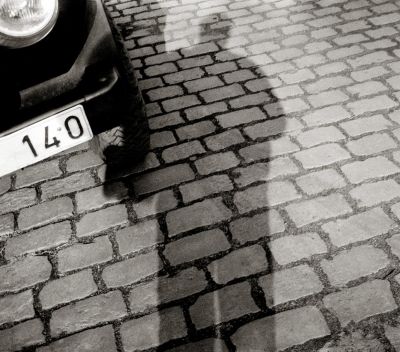Stefan Arczyński. A master of photography spanning two cultures
Mediathek Sorted



















































































His themes
Arczyński interest was rooted in the manifestations of social and cultural life. Many of his cityscapes and his pictures of historical buildings are well known, so that it would be true to say that his photographs brought recognition to the virtually unknown region, which returned to Poland in 1945. His focus on the details was meticulous and done with the care afforded by a documentalist. He particularly gave his attention to the town of Wrocław. Today, his images of this metropolis on the Oder, taken at various periods in time, are a valuable testimony to the enormous change the town has undergone since 1945.
Preserving the town’s most important architectural monuments, such as its churches, secular buildings and functional buildings, in photographs was a challenge. The fact that he mastered this challenge in such an exemplary manner was remarked upon by the acknowledged expert in Polish photography Adam Sobota:
“What really distinguished him was his ability to combine the soundness of his craft with the aesthetic of the modern, which at that time was rarely used, and this manifests itself in the full use of grey scale in the dynamic juxtaposition of shapes and surfaces. This type of photography closed the gap between avant-garde and pictorialist photography.[1]
Arczyński specialised in challenging and sophisticated photographs of scenes from the theatre and opera. He followed the work of Wrocławski Teatr Pantomimy Henryka Tomaszewskiego (Wroclaw Henryk Tomaszewski Pantomime Theatre) for many years by photographing performances, going on foreign tours with the theatre and taking portraits of the artists in his atelier.
In 1952, he met the woman who would later become his wife, the ballet soloist Lidia Cichocka, who he was supposed to take a portrait of for a poster and who was often an inspiration for his pictures. He travelled around the world a lot. In 1960, he visited the US, where he met his brother after many years of separation. His complete works include images from all the regions of the world, especially from Europe, China, India, Africa and the US.
Hundreds of pictures have come together over the years to create a number of series, which the photographer showed with great success in exhibitions, both at home and abroad. His pictures appeared in publications from various publishing houses, including Ossolineum, Arkady, Sport i Turystyka, Ruch and in the last few years in Via Nowa as well. Arczyński was also the creator of images printed on the covers of many magazines and used as the motif for picture postcards. His artistic achievements were honoured with various diplomas and medals. He became the only recipient in the history of the prize bestowed by the town of Wrocław (Nagroda Miasta Wrocławia) to win the award twice (1959, 2000). Arczyński was nominated on several occasions for honorary citizenship of the town and was awarded the renowned Silesian Culture Award (Śląska Nagroda Kulturalna, 1992). The Polish Minister for Culture and National Heritage also awarded him the Gloria Artis medal for services to culture twice (Medal Zasłużony Kulturze Gloria Artis): 2006 in silver and 2011 in gold.
Arczyński, who experienced many dramatic events of the 20th century during his long lifetime, always remained a person spanning two cultures. He never denied his relationships to Germany and to the Germans. He worked repeatedly as a photographer for German publishing houses and, because he understood the sensitivities and expectations of the Germans, he enjoyed great popularity. A few years ago, the historian Michał Kaczmarek wrote quite an accurate account of his ties to Germany:
“Like no other Polish artist, he, who knows the soul of the German reader, who once left his country, empathises perfectly in his psyche, reads his dreams and his longing for the lost kingdom of childhood. But at the same time he brings everything to the fore that is universal and timeless and resistant to political change. His clear and consistent approach places him today amongst a group of artists that worked on rapprochement between the two neighbouring countries their whole life without embroiling themselves in politics, without unnecessary words and without pompous slogans.”[2]
Krzysztof Ruchniewicz, May 2019























































































